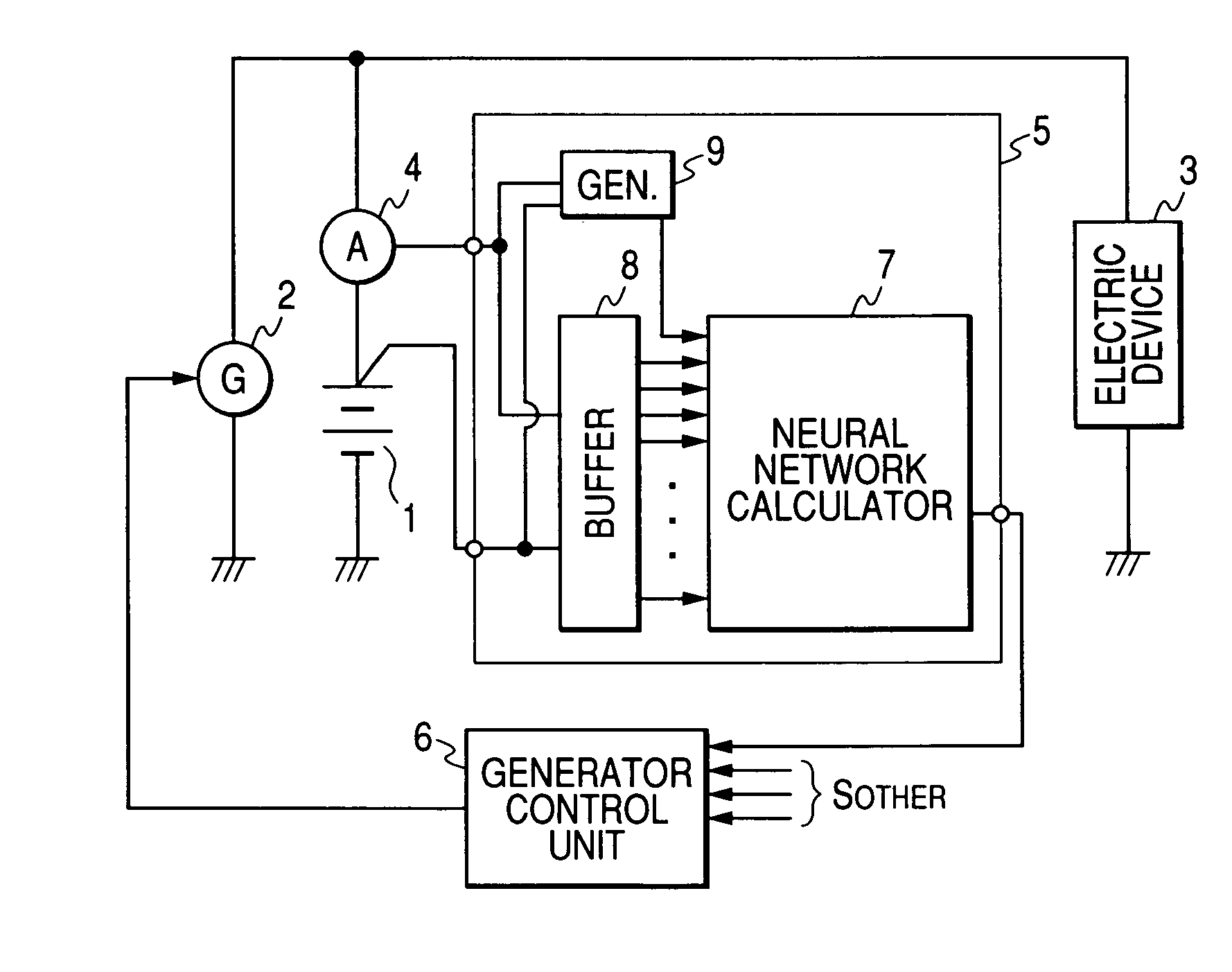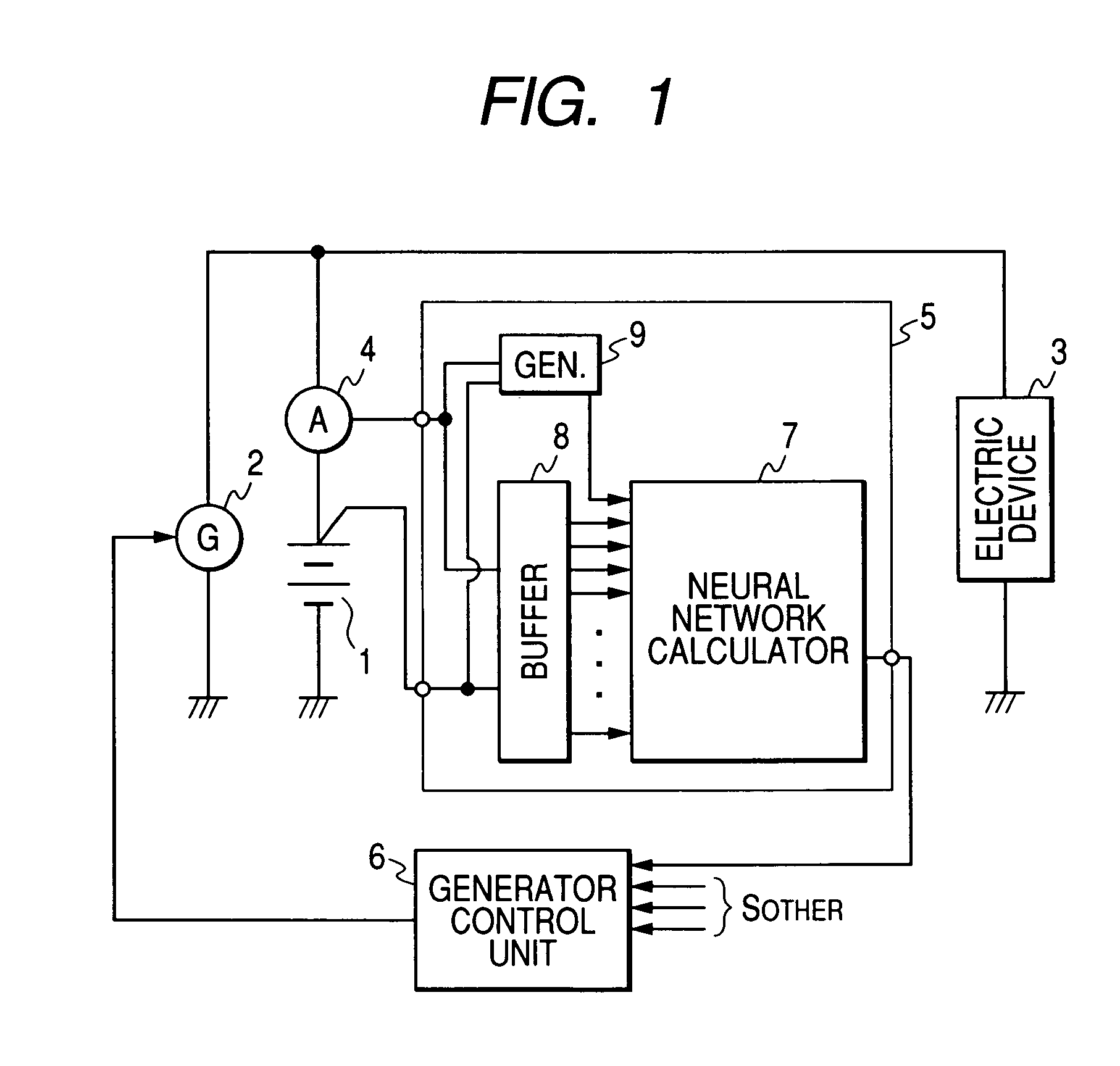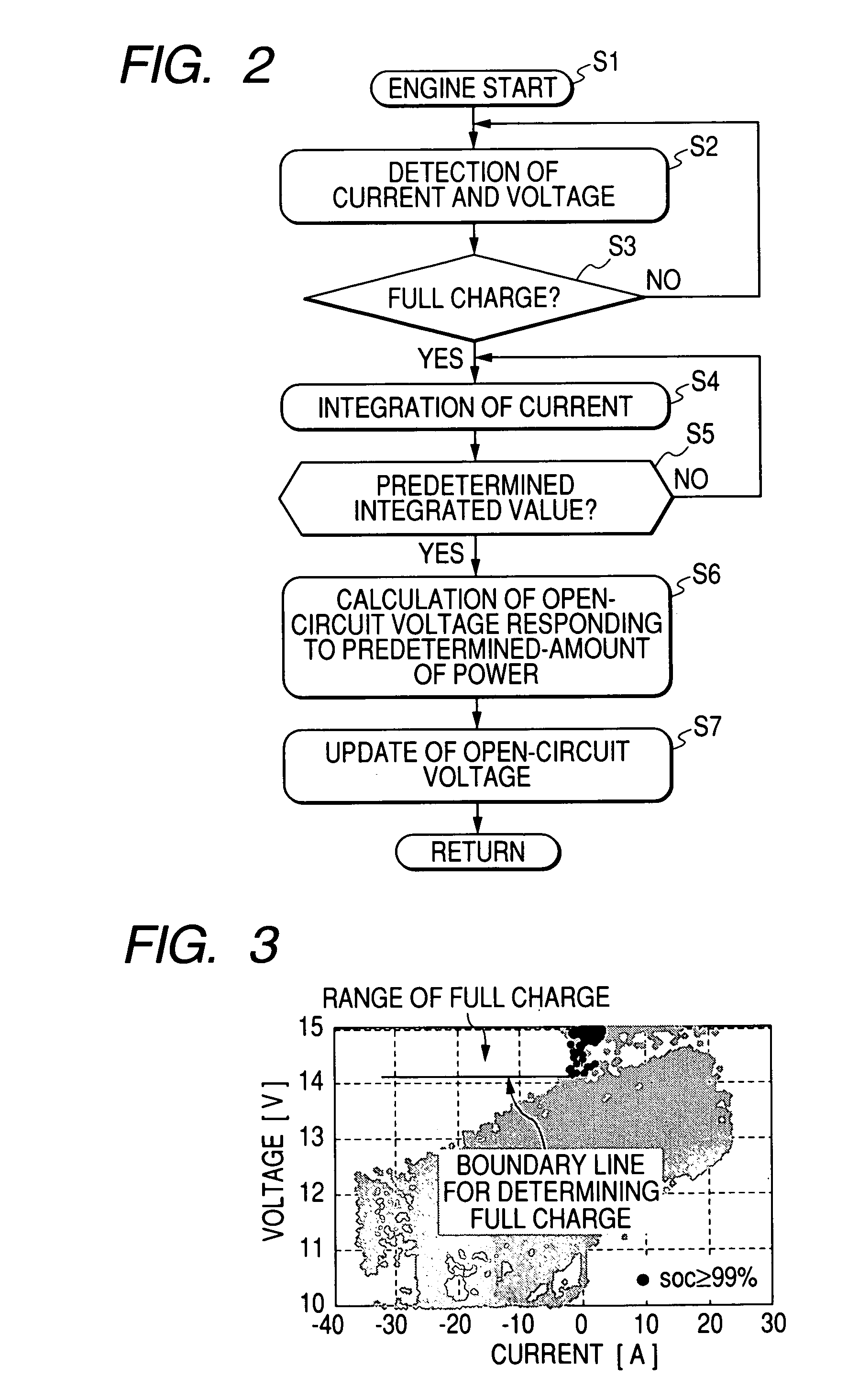Method and apparatus for detecting charged state of secondary battery based on neural network calculation
a secondary battery and neural network technology, applied in the field of battery systems, can solve the problems of insufficient detection, inability to prevent insufficiently, and difficulty in detecting the soc and/or soh of each secondary battery, and achieve the effect of high precision
- Summary
- Abstract
- Description
- Claims
- Application Information
AI Technical Summary
Benefits of technology
Problems solved by technology
Method used
Image
Examples
first embodiment
[0109]Referring to FIGS. 1-9, a first embodiment of the on-vehicle battery system will now be described. This on-vehicle battery system is based on neural network type of calculation and corresponds to a battery system according to the present invention.
[0110]As shown in FIG. 1, the on-vehicle battery system is provided with an on-vehicle battery (hereinafter, simply referred to as a “battery”) 1 and other electric components including an on-vehicle generator 2, an electric device(s) 3, a current sensor 4, a battery state detector 5, and a generator control unit 6. Of these, as shown, the battery state detector 5 is equipped with a neural network calculator 7, a buffer 8, and a correcting signal generator 9 and may be, in part or as a whole, formed by either a computer configuration or a structure on digital / analog circuitry.
[0111]The on-vehicle generator 2 is mounted on the vehicle to charge the battery 1 and power the electric device 3. The electric device 3 functions as an on-veh...
second embodiment
[0160]Referring to FIGS. 10 to 14, a second embodiment according to the on-vehicle battery system of the present invention will now be described.
[0161]The on-vehicle battery system adopted in the second embodiment is the same or equivalent as or to that adopted in the first embodiment except for the operations of the correcting signal generator. Thus, for the sake of simplified explanations, those components which are the same or equivalent as or to those in the first embodiment are given the same reference numerals and omitted from being described in detail. This manner will also be true of the succeeding embodiments.
[0162]As shown in FIG. 10, the second embodiment adopts a battery state detector 15 with a correcting signal generator 19 which is configured to use a difference ΔV between two open-circuit voltages Vo, which is different from the first embodiment. In the first embodiment, used is only the open-circuit voltage Vo detected when the battery 1 discharges in its full charg...
third embodiment
[0171]Referring to FIGS. 15 to 24, a third embodiment according to the on-vehicle battery system of the present invention will now be described.
[0172]The configurations and operations of the system in the third embodiment is essentially the same as those in the foregoing embodiments, but the correcting signal generator and neural network calculator are different in their configurations and operations from the foregoing.
[0173]The on-vehicle battery system according to the present embodiment is provided with a battery state detector 25 with a correcting signal generator 29 and a neural network calculator 17, instead of those shown in the foregoing.
[0174]The correcting signal generator 29 adopts, as calibration data, the internal resistance R of the battery 1 detected when a predetermined amount of power is discharged in the full charge state, in place of the open-circuit voltage detected in discharging a predetermined amount of power in the full charge state. On the other hand, the ne...
PUM
| Property | Measurement | Unit |
|---|---|---|
| open-circuit voltage Vo | aaaaa | aaaaa |
| open-circuit voltage Vo | aaaaa | aaaaa |
| open-circuit voltages Vofull | aaaaa | aaaaa |
Abstract
Description
Claims
Application Information
 Login to View More
Login to View More - R&D
- Intellectual Property
- Life Sciences
- Materials
- Tech Scout
- Unparalleled Data Quality
- Higher Quality Content
- 60% Fewer Hallucinations
Browse by: Latest US Patents, China's latest patents, Technical Efficacy Thesaurus, Application Domain, Technology Topic, Popular Technical Reports.
© 2025 PatSnap. All rights reserved.Legal|Privacy policy|Modern Slavery Act Transparency Statement|Sitemap|About US| Contact US: help@patsnap.com



